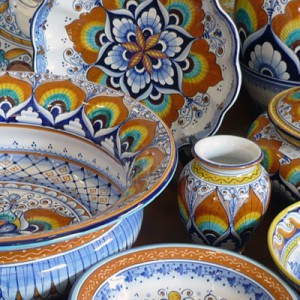National Museum of ceramics: number one in the world

Faenza - 11 August 2012 - Ugo Forghieri
Throughout the world the word Faenza is synonymous with ceramics. In fact in the 1500s the ceramic workshops of Faenza were the inspiration for potters all over Europe. The fame of the majolica – glazed earthenware pottery- such as the bianchi- white ware and the compeniario stye ( a simple decoration which was very innovative in its time) was such that the term faenza/faience came to mean majolica in many European languages.
It is because of this tradition and experience that the International Museum of Ceramics in Faenza which was founded in 1908 has become the largest collection in the world dedicated specifically to ceramics. Its rooms present the culture of ceramics from five continents through the centuries with over 30,000 works.
Alongside work from Italy and Europe you will find extraordinary range of exhibits: archaeological remains from the fifth millennium BC, pre-Colombian America, along with ceramics from classical Greece, the Roman Empire, the medieval period, the renaissance and the famous “faentino” 18th century. In fact from the early 1700’s Faenza became the prime mover of a new style-the garofano (carnation), which was based on an oriental design and is still extremely popular in local production. This coincided with the use of new technology such as the “piccolo whofuoco”. The production of the Conti Feriani played a leading role in this period with styles that were appreciated their purity and linearity. The “Foglia di Vite”- the vine leaf; la Ghianda- the Acorn, and il Castelletto- the small castle could be found on the tables throughout the world.
The journey through the different historical periods finishing with contemporary Italian and international works by major artists of the 20th century. You will find works of art by Picasso, Chagall, Matisse, Burri, Baj and Ontani alongside more contemporary works since the museum takes care to exhibit examples of what the ceramics sector is producing today. The large areas dedicated to contemporary work are also the result of the international competition, the Premi Faenza, which began in 1938.
There is around 6000 square metres of exhibition area with over 3500 works on display. The museum has also developed a series of interesting and innovative structures: a specialist library with more than 50,000 volumes about ceramics, a special workshop “Giocare con Arte” ( Play with Art) for teaching using the Munari method, and the Restoration department which looks after the maintenance of the museum’s collection as well as undertaking commercial restoration.
As the museum is also an extremely important international cultural centre for research and documentation. It is also undergoing changes: the amount of exhibition space has been increased, and what is on display is being arranged in a way to make it easier for the public to appreciate and understand. To sum up: if you find yourself in Faenza you simply cannot miss out on this wonderful museum.
Share the post "National Museum of ceramics: number one in the world"












